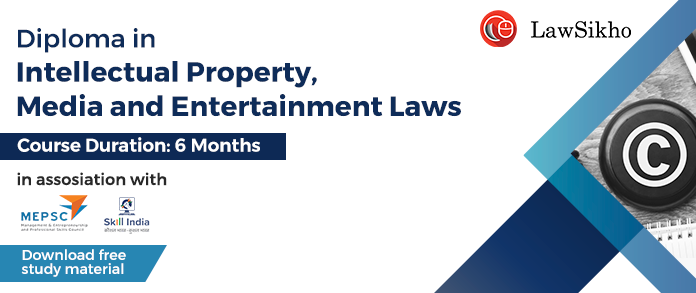This article is written by Ishan Arun Mudbidri, pursuing B.A.LLB from Marathwada Mitra Mandal’s Shankarrao Chavan Law College, Pune. Through this article, the author seeks to explain copyright infringement in light of the recent Instagram copyright scam.
Table of Contents
Introduction
Social media today has become more than just connecting with people far from us. It has become a world in itself. In this virtual world, Instagram has made its name. A single picture, a controversial story, a viral meme on Instagram can change people’s lives forever, sometimes in a good way and sometimes in a bad way. Celebrities and verified accounts are always in the spotlight on social media for some or another reason. This time, however, some celebrities have caught the eyes of fraudsters who are sending copyright infringement notices on their posts and posing some serious questions about Instagram’s security policies.
What is copyright?
Copyright is a type of intellectual property. It gives a legal right to the author of a literary/artistic work. Copyright entitles the owner to restrict other people from using his/her without his/her authorization. However, he/she may provide certain people with the right to use his/her work, under certain terms and conditions. The people who have been given authorization by the owner have the right to recreate that content/work. Each product created by a person is his/her original product. Hence, it is regarded as the intellectual property of the person so that no one else lays any claim on it. The original material can be in the form of a youtube video, a painting, lyrics of a song, movies, video games, etc. All of this material can be protected by copyright. When the copyright is being unauthorizedly used by a person, it is known as an infringement of the copyright.
Indian Copyright Act
The Indian Copyright Act was established in 1957. Section 14 of the Act defines ‘copyright’. According to it, copyright means that a person has an exclusive right to authorize the use of his work, including, reproduction, distribution, adaptation, public performance, etc. In the case of original literary, dramatic, musical and artistic works, the duration of the copyright is the lifetime of the author, and 60 years, counted from the year following his/her death. In the case of films, sound recordings, photographs, posthumous publications, works of government, and works of international organizations, the copyright is given for a period of 60 years which is counted from the year following the date of publication. The transfer of copyrights from assignor to assignee is known as a copyright assignment.
Copyright infringement
Section 51 of the Indian Copyright Act 1957 states the terms and conditions for when a copyright is infringed. This Section specifies the conditions for infringement of copyright:
- A person does any act which is the exclusive right of the owner without his/her permission.
- A person allows any place to be used for communication of unauthorized work, despite being aware of the fact that such an act will result in a violation of a copyright.
The authorized holder of the copyright can obtain certain remedies for copyright infringement. According to Section 55 of the Act, on infringement of any copyright, the owner will be entitled to remedies in the form of damages or injunction. According to Section 63 of the Act, the person who infringes the copyright is liable to punishment which may extend up to 3 years and a fine of up to 2 lakhs.
Exceptions to copyright infringement
Section 52 of the Indian Copyright Act states the conditions where a person who infringes copyright can get exempted from punishment. The following are the exceptions:
Taking prior permission from the owner
If a person who is accused of infringing a copyrighted work, takes the defence that he/she has taken prior permission to use the copyrighted work from the owner of the copyright, he/she will be saved from punishment for infringement.
The doctrine of fair dealing
The doctrine of fair dealing or fair use is another important exemption to copyright infringement. According to this doctrine, a person can have limited access to copyrighted work without the authorization of the owner. The only condition to this exception is that the person using the work should make sure that he/she does not harm the interest of the owner by using that extracted portion. In India, there is no explicit mention of how much content can be extracted.
The Berne Convention
The Berne Convention suggests that the infringement of copyright can be accepted only when,
- The infringement does not spoil the interests of the owner.
- Does not exploit the original work.
- And when it covers special cases.
A look into the Instagram copyright infringement scam
The Instagram infringement scam has gone viral on social media recently. Various Bollywood celebrities and singers claimed that they received copyright infringement notices from Instagram. So how does this work? The user receives a message from an account claiming to be from the Instagram copyright infringement centre. This message is usually sent to verified accounts or famous personalities. The message states that some of the posts from this account have violated Instagram’s community guidelines. Further, a copyright appeal form is attached to this message, and not filling up this form will lead to the deletion of the user’s account within three days. This appeal form asking for feedback from the user is basically a phishing link.
Concept of a phishing link
A phishing link is a kind of weapon that is created by hackers and fraudsters to gather the personal information of the users for selfish motives. Many say, this is one of the oldest forms of cyber attack. The attackers send a message or an email that looks really genuine and from a trusted entity. Due to this, the users fall prey to hackers and fraudsters.
Phishing kit
A phishing kit is an important tool that is used while sending phishing links. A phishing kit can be acquired from a phishing website and should be installed on a server. After acquiring a phishing kit, the attackers can send fraud emails and messages to the users. With a phishing kit, the chances of a user clicking the phishing links are very high. Sometimes, huge companies can also be cheated with the help of phishing kits. All phishing websites can be accessed through the dark web.
Types of phishing
The different types of phishing are:
Spear phishing
Spear phishing is a form of phishing where the attackers target a particular person of a company or in general. For example, the attackers may target someone from the accounts department of a particular company. The attackers use fake addresses and make them look genuine.
Smishing
Smishing is a form of phishing where the attackers send messages that consist of a phishing link. If the link contains a message to verify the bank account, that means the attacker has access to the user’s bank account.
Whaling
Whaling is a form of phishing that targets people holding a very high post in a company, for example, a CEO or Chairman. This can be a time-consuming process but, the attackers generally benefit the most when the victims are at a higher post.
The attackers generally target a particular event or crisis going on in the country. This is because the people are desperate and there is a sense of urgency during times of crisis. Any information regarding the crisis is like a ray of hope for the users and this is what the attackers take advantage of.
How to report a copyright infringement case on Instagram?
The users can report a case of copyright infringement on Instagram. This can be done by:
- Filling the copyright infringement form available on Instagram.
- Another thing that can be done is filing a request for copyright infringement on the Digital Millennium Copyright Act. Then the user will have to contact the DMCA agent. The users will have to update the DMCA agent about the whole copyright infringement claim.
Instagram’s copyright infringement policy
We as users generally ignore the terms and conditions for the use page when we install an app. That is a very important page. Terms of use mean the various policies of the app which the users should abide by while using the app so that no inconvenience is caused. The same is the case with Instagram. The app has loads of terms and conditions for the users enjoying the benefits of the app. One of such policies is that of copyright infringement. Instagram mentions that no person can post or share anything which violates the legal rights of the owner. Instagram further mentions that the content in the form of posts and videos shared on the app is the responsibility of the user and not that of the app. The pop-up that appears which asks the users to either allow or deny the permissions given to the app must also be read carefully. This is because clicking the ‘allow’ option gives Instagram a non-exclusive license to modify, create, distribute, and perform the content of the users. In case of a copyright infringement, Instagram will send a notification to the person infringing another’s copyright and will remove the post also mentioning the reason. If the same person infringes the copyrights again and again then, the app will disable the account of the user and he/she may not be able to access it again.
How to avoid copyright infringement on Instagram?
Create your own content
The users must make sure that they create their own content and not copy anyone else. Every person is born different, so no one has a right to copy from others. If many people have created that content, then it is necessary to mention who owns that content.
Share short clips
Posting short one-second to three-second video clips can save a person from infringing copyright. This was also mentioned in the doctrine of fair use. If a video is small, it cannot get copyrighted.
Take permission
If a user wants to share another person’s content, then he/she should take prior permission from the owner of the content. If the owner grants permission then and only then, as the user should post their content.
Change the original content
If, by any chance, the user wants to use the author’s content then, he/she can change or modify that content so that it may look like it’s an original one. This will not come under the radar of Instagram’s copyright infringement policy.
Read all the terms and conditions available
Lastly and perhaps the most important thing, for making sure that the content does not get infringed, is to read all the terms and conditions for use of the app. The terms and conditions of not just the copyright infringement policies but also, all the other terms provided about how to use the app.
Conclusion
Instagram today has grown so much that security issues are bound to occur. Every app tries its best to satisfy the users and not bring any inconvenience to them. So, it is up to the people using the app to be more vigilant and aware. The same thing should be followed while posting any content. Hackers and fraudsters are just waiting with various new cyber-attacking tools to make the users fall into their traps. But, this would not be the case if the users read all the terms and conditions before using the app and show some originality in their content.
References
- https://hacked.com/instagram-copyright-infringement-scam/
- https://www.mondaq.com/australia/social-media/1029086/how-to-avoid-copyright-infringement-on-instagram
- https://copyrightalliance.org/faqs/what-is-copyright/#:~:text=A%20copyright%20is%20a%20collection,and%20display%20the%20work%20publicly.
- https://copyright.gov.in/Documents/CopyrightRules1957.pdf
LawSikho has created a telegram group for exchanging legal knowledge, referrals, and various opportunities. You can click on this link and join:
https://t.me/joinchat/J_0YrBa4IBSHdpuTfQO_sA
Follow us on Instagram and subscribe to our YouTube channel for more amazing legal content.
 Serato DJ Crack 2025Serato DJ PRO Crack
Serato DJ Crack 2025Serato DJ PRO Crack











 Allow notifications
Allow notifications



